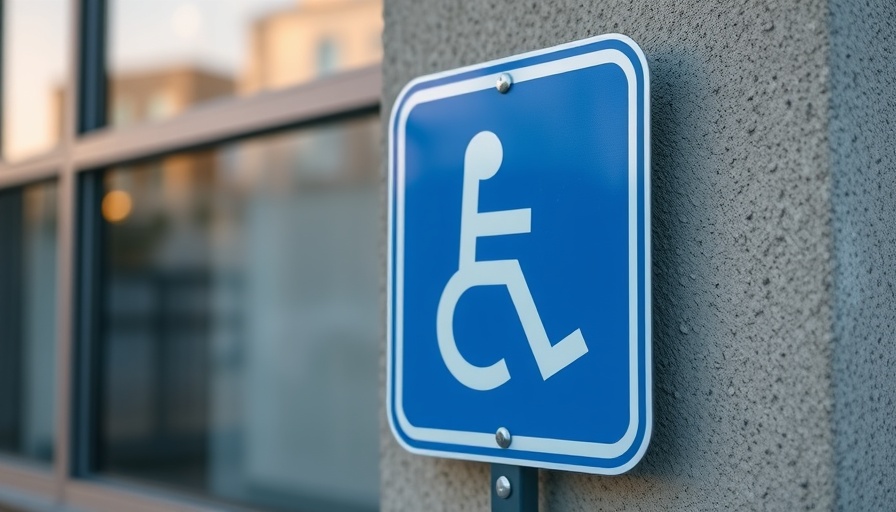
Legal Battle Over Handicap Rights: A Man's Stand Against Police Actions
In a significant case highlighting the complexities of disability rights and law enforcement interactions, a League City man, Robert Adamson, is taking legal action against the police department after being arrested for failing to display a handicap placard. This unfolding story raises critical issues surrounding the interpretation of the law and the overarching question: do the police have the authority to enforce regulations without clear communication and understanding?
Understanding the Incident: A Passenger's Perspective
On that day in question, Adamson was pulled over by officers who cited his vehicle for not displaying a handicap placard while parked in a designated space. However, Adamson insists that he was en route to pick up a placard, as the documents supporting his disability were reportedly misplaced. This innocent oversight turned into a dramatic confrontation, leading to his arrest.
The case describes Adamson's experience as 'distressing', as plate recognition technology misidentified his vehicle during the traffic stop, escalating the situation unexpectedly. This story not only illustrates how technology can misfire but also emphasizes the emotional impact of policing on individuals with disabilities.
Trends in Law Enforcement Interactions with Disabled Citizens
This incident has sparked broader conversations surrounding the interaction between law enforcement and individuals with disabilities across the U.S. According to findings from various advocacy groups, these encounters often result in misunderstandings that can escalate into severe consequences, including unnecessary arrests. Knowing that about 1 in 4 adults in the U.S. live with a disability, the significance of this case extends to many who may encounter similar situations.
Moreover, these incidents raise questions on training protocols for police officers regarding disability rights, highlighting the need for comprehensive training focused on sensitivity and informed responses.
Legal Precedents and Implications
Adamson's lawsuit shines a light on the nuances of the law and the implications of misunderstanding. His attorney argues that the case could set a precedent regarding how police interact with disabled citizens and interpret laws governing legal exemptions for parking. As this case unfolds, legal experts are watching closely, anticipating its potential impact on future policing practices in similar situations.
Legal analysts underscore that courts have historically ruled in favor of citizens who demonstrate legitimate disabilities, as long as they provide proper documentation. This case will determine how strict such requirements ought to be.
Personal Perspectives: The Emotional Weight of Medical Conditions
For individuals like Adamson, navigating everyday life can already be fraught with challenges. As he shared his side of the story, it was clear that this encounter with the police intensified the burden he faces daily. The emotional toll of misperceptions, especially in potentially volatile situations, leads one to reflect on how society can better support those living with disabilities.
Adamson expresses a desire for more compassion and understanding from law enforcement, making clear that he wants to ensure that his experience leads to positive changes rather than further stigmatization of individuals with disabilities.
How Will This Case Shape Future Interactions?
As we follow Adamson's case, it’s crucial to consider what might change in law enforcement protocols moving forward. Will we see increased awareness and training, or will this remain a singular incident largely ignored? Advocates for the disabled community are hopeful that this case will prompt significant policy discussions within police departments nationally.
Social advocates suggest that sharing stories, like Adamson's, can motivate meaningful change and foster new policies that protect the rights of disabled individuals. The awareness this case is bringing to the public discourse might just result in historical shifts in policing and societal attitudes toward disability rights.
Conclusion: The Importance of Advocacy and Awareness
The ongoing legal battle faced by Robert Adamson highlights the vital intersection of health, law enforcement, and individual rights. As this case develops, it stands as a pivotal moment for advocates seeking change in the legal approaches to policing individuals with disabilities.
As community members and citizens, it is our responsibility to engage in discussions that uphold dignity and ensure fair treatment under the law. Change begins with awareness, conversation, and a united call for understanding. Let's champion the rights of individuals and derive lessons from such incidents as we look toward creating a more equitable society.
Individuals wishing to follow similar cases or support disability rights should stay engaged with community organizations and advocacy efforts.
 Add Element
Add Element  Add Row
Add Row 



Write A Comment